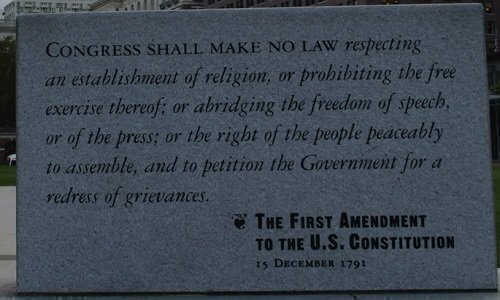Classroom Resources By Topic
Bill of Rights Overview

Introduction
The Bill of Rights is the first 10 amendments to the U.S. Constitution. These amendments guarantee essential rights and civil liberties, such as the freedom of religion, the right to free speech, the right to bear arms, trial by jury, and more, as well as reserving rights to the people and the states. After the Constitutional Convention, the absence of a bill of rights emerged as a central part of the ratification debates. Anti-Federalists, who opposed ratification, pointed to the missing bill of rights as a fatal flaw. Several states ratified the Constitution on the condition that a bill of rights be promptly added.
What is the Bill of Rights, and why did the framers think it was necessary? Where did the idea of a emerge from? What rights are in the Bill of Rights? Why those rights and not others?
What was the role of the Anti-Federalists, those who opposed the Constitution, in making the Bill of Rights?
After the founding generation, how did the Bill of Rights change over time?
Constitution 101
Module 5: The Bill of Rights
The Bill of Rights Featuring Justice Neil M. Gorsuch
U.S. Supreme Court Associate Justice Neil M. Gorsuch discusses James Madison’s thoughts when drafting the Constitution and the Bill of Rights.
Bill of Rights
The first ten Amendments to the Constitution form the Bill of Rights.
THE DECLARATION, THE CONSTITUTION, AND THE BILL OF RIGHTS
This lesson builds student understanding of the relationships between the United States’ founding documents by comparing and contrasting the Declaration of Independence, the U.S. Constitution, and the Bill of Rights.
The Bill of Rights Featuring Akhil Amar
In this Fun Friday Session, Akhil Reed Amar, Sterling Professor of Law and Political Science at Yale University, joins National Constitution Center President and CEO Jeffrey Rosen for a discussion on the Bill of Rights—its rights, its protections and limitations on government—and the process by which it was discussed, debated, and ratified
Akhil Reed Amar on the Bill of Rights
“America’s greatest teacher of the Bill of Rights” explains the document’s history and importance on its 225th anniversary.
Constitution Hall Pass: The Bill of Rights
Explore the compelling story of our Constitution’s first ten amendments.
Eight basic facts about the Bill of Rights
Here are eight key facts about this enduring testament to liberty and freedom!

Five items Congress deleted from Madison’s original Bill of Rights
When James Madison spoke to the First Congress he proposed nearly 20 amendments as a Bill of Rights, and not the 10 we all know about. So what did Congress delete from the final list that was ratified by the states?

Can you pass a Bill of Rights quiz?
How much do you know about the basic facts about the Bill of Rights? Take our 10-question quiz and find out now!
Bill of Rights Bingo
Get more familiar with the Bill of Rights with this simple bingo game.







